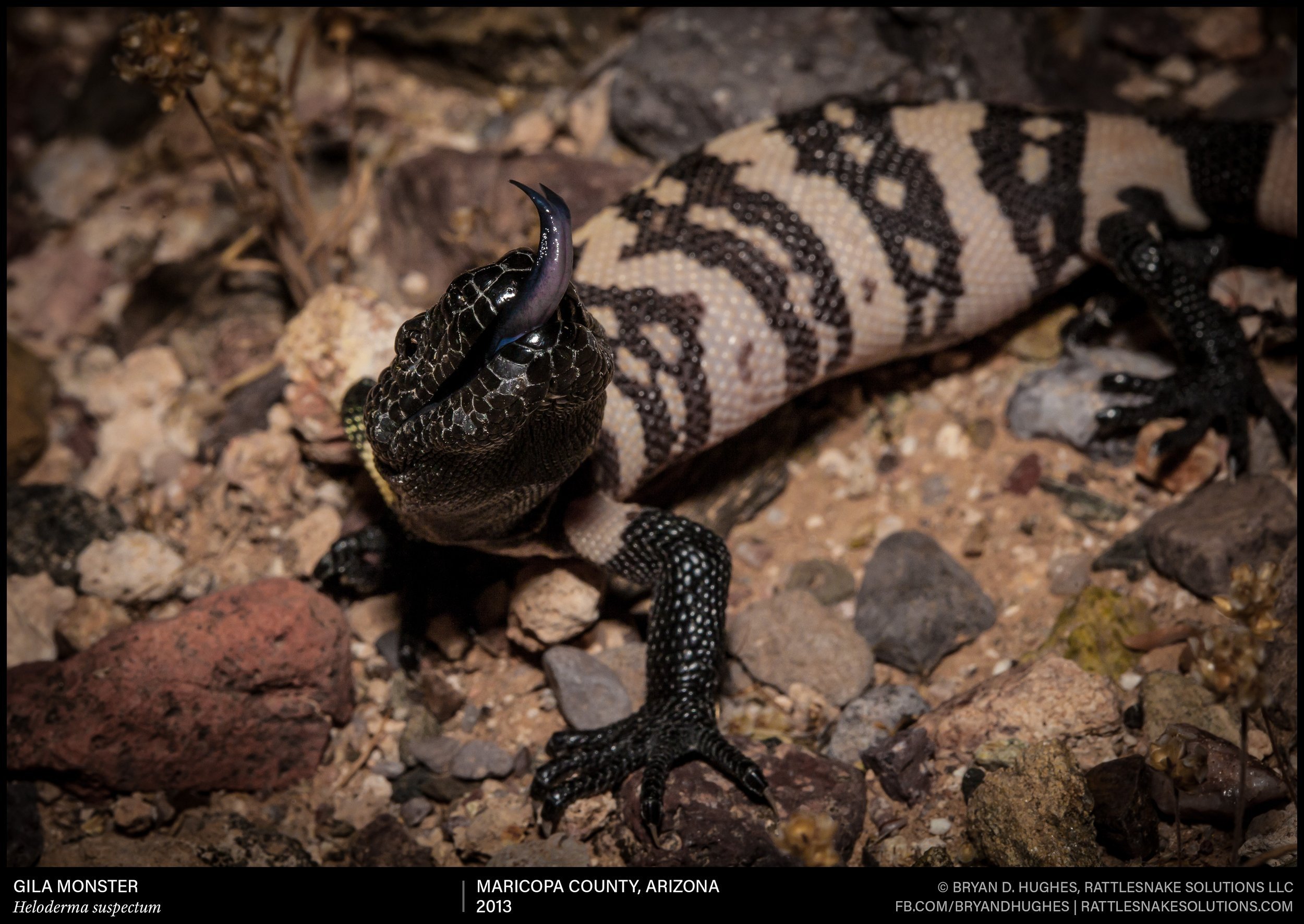Gila Monster Bites and Venom
Written by Benjamin German, MD
A rare occurrence recently unfolded as a Colorado man succumbed to a bite from a captive Gila monster (Heloderma suspectum). These venomous lizards, native to the southwestern United States and northwestern Mexico, are renowned as one of the few medically significant venomous lizards globally, alongside the Mexican beaded lizard (Heloderma horridum). While past reports of fatalities from Gila monster bites are scant and poorly documented, this recent incident offers a glimpse into the potentially life-threatening effects of their venom on humans.
Gila monsters, the largest native lizards in the United States, can stretch nearly two feet in length. With their robust bodies and bony-scaled skin, sporting vibrant patterns of orange and black, they epitomize the rugged charm of desert landscapes. Preferring rocky desert terrains, these elusive creatures primarily feed on bird eggs and small mammals, spending much of their time hidden in underground burrows or rock crevices, only emerging to bask or forage under cover of darkness during hot weather.
In the realm of venomous reptiles, snakes often steal the limelight with their hollow fangs, well-evolved for delivering potent venom. However, Gila monsters boast a unique arsenal with large grooved teeth designed to inflict deep wounds through which venom, produced by glands in their lower jaw, flows into their prey or adversaries. While this venom primarily serves as a defensive mechanism against predators like coyotes, it can induce severe pain and adverse effects in humans if bitten.
Victims of Gila monster bites commonly report excruciating pain lasting hours to days, accompanied by symptoms such as vomiting, diarrhea, sweating, and even loss of consciousness. Despite the absence of specific antivenom due to the rarity of such incidents, prompt medical attention is crucial, involving tetanus vaccination, pain management, and supportive care.
Encounters with Gila monsters in the wild need not evoke panic, as these creatures typically avoid confrontation, preferring retreat over confrontation. However, handling them recklessly, particularly in captivity, can lead to unpredictable bites, underscoring the importance of cautious interaction.
Having had the privilege of observing these captivating creatures in Arizona’s wilderness, I’ve marveled at their resilience and adaptability to harsh environments. While habitat loss, road mortality, and human interference threaten their survival, Gila monsters offer invaluable insights into venom chemistry, contributing to medical advancements. For example, Gila monster venom contains a protein called exendin-4 that was used to develop treatments for type II diabetes. Further study of these proteins led to the development of drugs like semaglutide, which is widely used for weight loss and treating diabetes.
Despite their formidable reputation, fatalities from Gila monster bites are exceedingly rare, and appreciation for these majestic creatures should not be overshadowed by fear. If blessed with a sighting in the wild, it’s best to admire them from a safe distance, refraining from any attempts at capture or handling. After all, in the enchanting tapestry of the desert southwest, Gila monsters reign as resilient icons worthy of admiration and respect.
If you found this article helpful, please consider donating to ASF today. Every donation is tax deductible and directly impacts the outcome for snakebite victims worldwide.



